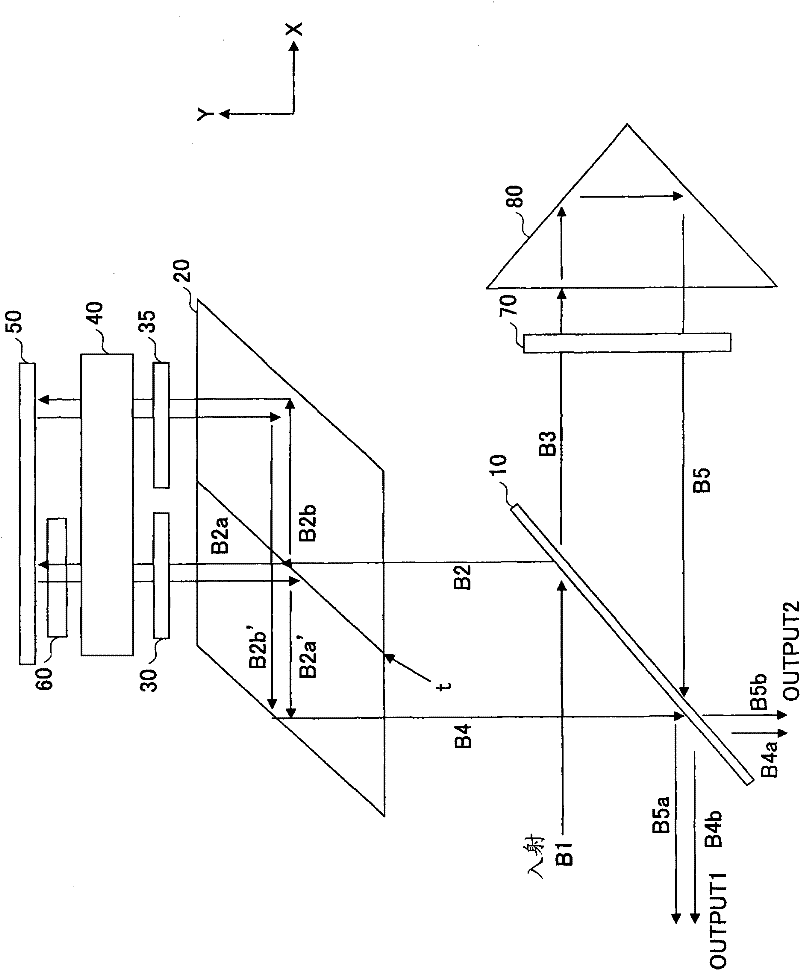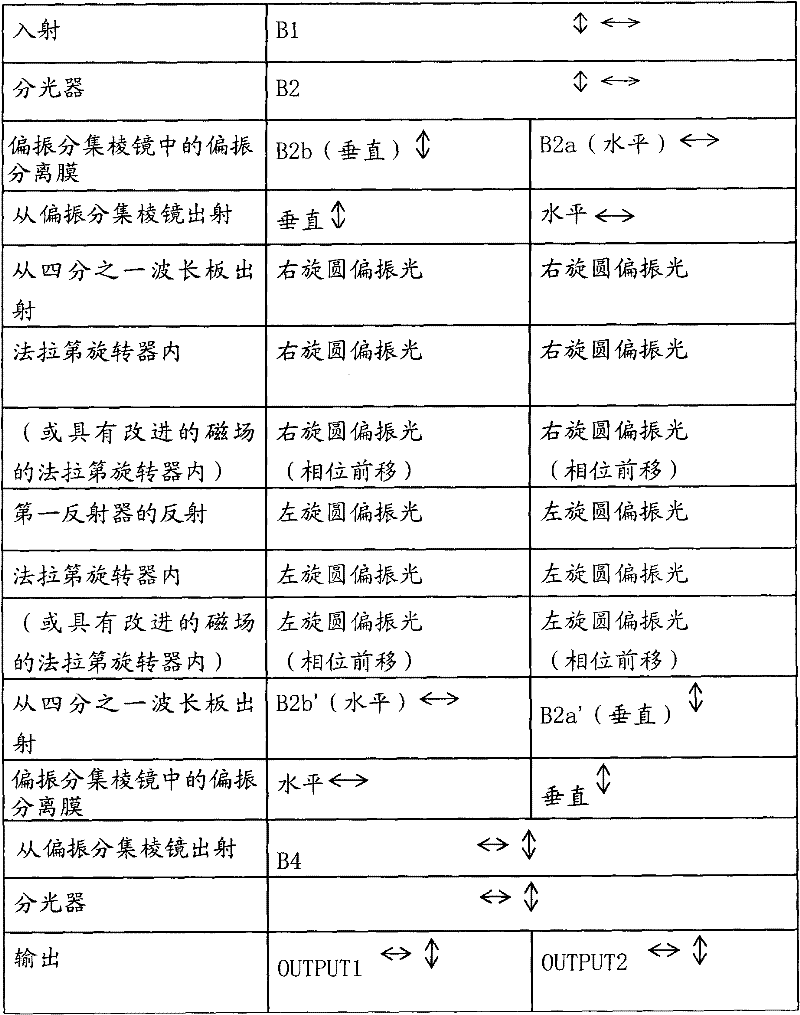Delay interferometer using magneto-optic effect
A delay interferometer, optical path technology, applied in instruments, optics, light guides, etc., can solve problems such as slow response speed
- Summary
- Abstract
- Description
- Claims
- Application Information
AI Technical Summary
Problems solved by technology
Method used
Image
Examples
no. 1 approach
[0023] The delay interferometer disclosed here utilizes the magneto-optic effect for phase adjustment. Among various magneto-optical effects, Faraday rotation may be the most well-known and actually used effect. As an example of a device for phase adjustment, the delay interferometer disclosed herein employs a variable Faraday rotator (VFR).
[0024] Faraday rotation is generally understood as the rotation of linearly polarized light. It should be noted, however, that Faraday rotation can also be defined as a physical phenomenon that occurs for circularly polarized light. Faraday rotation can provide a phase difference or optical path length difference between right-handed circularly polarized light and left-handed circularly polarized light.
[0025] Faraday rotation produces a difference in optical path length for circularly polarized light, which is λθ / 2π when the wavelength is λ and the rotation angle is θ (expressed in radians). The optical path length can thus be adju...
no. 2 approach
[0070] A receiver according to a second embodiment will be described below. The receiver of the second embodiment utilizes the delay interferometer of the first embodiment. Before describing the structure of the receiver, the polarization dependent frequency shift (PDFS) will be described first.
[0071] PDFS refers to the phenomenon that the frequency (or wavelength) of the interfering light deviates due to the difference in optical path length between the interfering polarized beams. In a delay interferometer, there are many different factors that contribute to the difference in optical path length through polarization. It is preferable that this difference in optical path length due to polarization can be eliminated. In the delay interferometer described in the first embodiment, the two beams travel through the variable Faraday rotator such that these beams are susceptible to the magnetic field distribution in the variable Faraday rotator. Small differences in the Farada...
PUM
 Login to View More
Login to View More Abstract
Description
Claims
Application Information
 Login to View More
Login to View More - R&D
- Intellectual Property
- Life Sciences
- Materials
- Tech Scout
- Unparalleled Data Quality
- Higher Quality Content
- 60% Fewer Hallucinations
Browse by: Latest US Patents, China's latest patents, Technical Efficacy Thesaurus, Application Domain, Technology Topic, Popular Technical Reports.
© 2025 PatSnap. All rights reserved.Legal|Privacy policy|Modern Slavery Act Transparency Statement|Sitemap|About US| Contact US: help@patsnap.com



